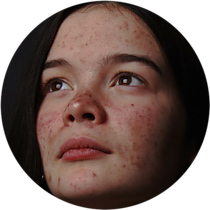[lwptoc]
What’s the main cause of acne? A question that still leaves so many people bewildered.
Previously, we looked at organic skincare for acne sufferers. This time, we will go on a journey to find out what the main causes of acne are.
Really wanna know?
If you have ever asked yourself that important question: what’s the main cause of acne? Then we are delighted to let you know that you’ll leave here feeling fulfilled! A principle that we abide by is that anything that’s worth doing is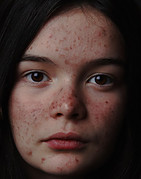 worth doing well. This principle applies to every facet of life if one is looking to succeed.
worth doing well. This principle applies to every facet of life if one is looking to succeed.
There are different categories of people in life. There are those who go the distance to find the solution to their problems by understanding the problem because they know the result is worth the process. On the other hand, you find people who are either lazy or unmotivated to go that distance. So, who do you think will succeed in the end?
Subject made easy: The subject of acne is such an intricate and broad one. What we have done for you is simplify it so that you grasp the main concept of what you need to know about acne and become a “full bottle” on it!
What you should know – The truth about acne
There have been several misconceptions about acne. Therefore, it is important to know the truth about acne while seeking a sure path to successfully managing it.
Misconception: WHO has considered acne to be a chronic problem, so it’s totally false to have someone say that acne is self-limiting in teenagers. It can persist well into adulthood. Even after treatment, there could be severe relapse in adulthood.
What’s Acne?: Mainly, acne stems from the inflammation of the pilosebaceous follicle (found on the face, chest and back) with certain characteristics such as papules, pustules, comedones/lesions and in chronic cases scarring. It involves complex inflammatory and metabolic processes. It is also considered to be caused by multiple factors such as diet, microbiota (e.g. Propionibacterium acne = P. acne), stress, alteration in sebum composition.
Hold a minute!
Hope this hasn’t confused you. Let’s break it down step by step in a precise and concise manner. What you also get is a simplified version of the various biological processes that will become relevant to finding a sustainable cure.
Understand your condition – what are the causes of acne?
Although Acne is multi-factorial, here are the main causes – explained and summarized in the below content;
- Inflammation
- Food with high glycemic index
- Insulin resistance
- Stress
- HPA/CRH/Cortisol
- Hormones
- Bacteria (P. acne)
- Sebum composition and oxidation
- sebum – high level and altered composition
- squalene
- ultraviolet ray/sunlight
- free radicals
Inflammation:

What’s essential here is that Inflammatory process has been implicated in acne. The number of inflammatory upregulated genes are significantly higher than downregulated genes in acne sufferers compared to non-acne sufferers. This so-called inflammatory disturbance can lead to increase in inflammatory markers such as cytokines and interleukins which have been linked to acne formation. The result of such inflammatory dysregulations leads to the stimulation of Follicular hyperkeratinization which can in turn cause acne.
Summary: Ok, If the issue of inflammation is confusing, just skip, but remember that inflammatory process is involved. Now consider the following causes that are perhaps relatable.
Glycemic index (GI)/carbohydrates:

GI is defined by the quality of carbohydrates consumed. Foods with high glycemic index have been shown to correspond with induce high insulin response. This can cause the synthesis of androgenic hormones which leads to an increase in the production of sebum. Increased sebum production corresponds with how severe acne presents. Increased insulin levels in the fasting state can enhance proliferation of basal keratinocytes which leads to worsening of acne.
When there is high insulin level, there is increase in the level of insulin-like growth factor-1 (IGF-1) but with low insulin-like growth factor binding protein-1 (IGFBP-1). On the other hand, low GI foods have been associated with weight loss, reduced level of insulin, low IGF-1 with corresponding high IGFBF-1 which stimulates insulin sensitivity and consequently reduced acne lesion severity or count. Therefore, it is expected that reducing fasting and insulin levels will help lower sebum production and proliferation of keratinocytes.
Summary: What’s important here is the association between high GI and worsening of acne, in contrast to low GI and lessening of acne.
What about insulin resistance:

This can happen when elevated level of glucose overwhelms an average amount of insulin and the cells cannot utilize insulin fast enough. Consequently, the cells do not take up glucose fast enough due to high glucose level, so the body secrets more insulin to help with the uptake of glucose. This then leads to increased level of insulin that can ultimately result in the pathogenesis of acne as highlighted above.
Summary: What this proposes is: High glucose levels in presence of normal insulin levels = insulin resistance = increased insulin (trying to balance it out) = worsening of or trigger for acne
And of course Stress!

- Weather physical, emotional or general factors, stress is the reality of so many. Some people may have wondered if their acne might be a result of the stress they experience. This is a possibility! People experience stress in varying degrees and of different types. Stress has been known to trigger the release of androgenic hormones from the adrenal gland which is situated above the kidneys. There are two types of adrenal androgens – testosterone and androsterone. Studies showed that among people with acne, those perceived to have higher emotional stress levels had more severe acne. This proportionally correlated with increased levels of androgenic hormones in acne sufferers with elevated stress levels. Increased levels of androgenic hormones in response to stress can lead to sebaceous hyperplasia.
Summary: if you had acne and were part of the study conducted, you’d find that the higher your stress levels, the more severe your acne compared to another acne sufferer with lower stress levels
Hypothalamic-Pituitary-Adrenal axis (HPA), Corticotropin releasing hormone (CRH)/Cortisol:
CRH in the stress response pathway have been associated with acne formation. CRH stimulates certain inflammatory markers, such as cytokines, that are well established to be causal factors of acne. There are also higher levels of CRH in detected in the sebaceous glands in people with acne compared to those in none-acne sufferers.
Summary: Can’t be bothered by the names? Just remember that when you undergo stress, you are increasing the severity of your acne or your risk of getting acne break out.
Hormones
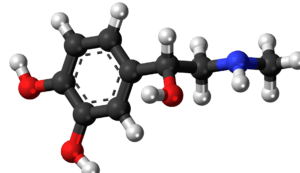
Levels of different hormones have been shown to vary in individuals with acne compared to those without acne. Different hormones with different pathways in the disease process such as insulin, insulin-like growth factor 1 (IGF-1), progesterone, glucocorticoid and testosterone have all been shown to have higher levels in acne patients whereas their estrogen levels are low.
Summary: Male or female, we all have hormones that are like messengers that help to regulate many of the body’s functions. So you can identify above the association between certain hormones and acne
Microbiota (most importantly P. acne):
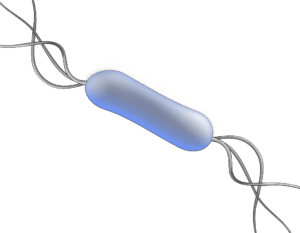
P. acne is a gram-positive bacillus that contributes to acne formation. P. acne develops biofilm and becomes pathogenic. It then induces the inflammatory process that causes keratinocytes to synthesize certain inflammatory markers such as cytokines and chemokines involved in the pathogenesis of acne.
Summary: P. acne is just a type of bacteria on the skin that is linked with acne formation
Skin sebum (oily) composition and oxidation
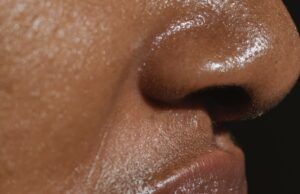
- Sebum:
This is an important protective lipid of the skin secreted by sebaceous gland. Sebum in humans consists of squalene, wax and cholesterol esters and some free cholesterols and free fatty acids. Alongside increased secretion of sebum, altered composition of sebum has been shown to be critical in the formation of acne. Inflammation of the follicle can be initiated when the composition of saturated and unsaturated fatty acids in the sebum is altered. Some free fatty acids can be both pro-inflammatory and anti-inflammatory. While Linoleic acid does help mitigate against acne or comedone formation, reduced levels been detected in the surface lipid of acne patients. On the other hand, oleic acid has been found to trigger the process that affects calcium dynamics which consequently results in formation of comedones (a precursor to acne lesions) through unusual follicle keratinization. Desaturation of fatty acid through certain incorrect enzymatic activities (leading to unsaturated fatty acids) as well as increased sebum production can alter the composition of sebum which can potentially lead to acne formation.
- Sebum:
Summary: Too much to take in? Have you ever touched your skin and say hey, my skin feels so oily? That’s the sebum. what you should be aware of is that when this oily stuff is too much or if there’s an upset in what makes a suitable sebum for your skin due to internal or external factors, there’s the likely chance that you can break out in acne or have an increased severity of your acne.
Squalene and Ultraviolet radiation/sunlight:

This is a precursor to cholesterol formation on the skin. Build up of squalene peroxides in the sebocytes can occur when there is enzymatic “failure” to convert squalene to cholesterol and peroxidation through oxidative enzymatic activities or ultra-violet radiation (UVR). Photodegradation (from UVR) can involve oxidative processes that results in squalene peroxides. This form of squalene can leads to the cascade of inflammatory events as well as proliferation of the keratinocytes which result in acne formation.
Summary: Squalene is just another type of sebum. If not converted into cholesterol (which is like one of the defense solders for your skin), it can get spoilt (by sun, oxygen etc.) and become toxic to your skin which can then lead to the process of acne formation.
Free radicals/oxidation:
Lipid peroxidase (LPO) and reactive oxygen species (ROS) are oxidative stress components. ROS interaction with oxygen can lead to free radicals. Free radicals can produce peroxidase which can in turn trigger inflammatory processes involved in the aetiopathogenesis of acne through varying oxidative process. These oxidative pathways can involve polyunsaturated fatty acids (such as linoleic and arachidonic acids) and can often occur in the presence of metals such as zinc and copper. Endogenous antioxidants such as alpha-tocopherol and vitamin E have been said to help inhibit oxidative pathways.
Summary: Imagine free radicals as troublemakers. They are by-products of the body or from chemical proceses that just want to cause trouble. They are linked to acne formation
.
RELATED ARTICLE: Foods that Help Cure Acne – What’s good and what to avoid
I like to read your thoughts. Leave your comment below and I’ll get back to you ASAP
REFERENCES:
Camera, E. & Picard, M. Lipid Mediators in Acne. Hindawi Journals. Vol. 2010. Article ID 858176. doi.org/10.1155/2010/858176
Capitanio, B., Lora, V., Ludovici, M., Sinagra, J. L., Ottaviani, M., Mastfrancesco, A., Ardigo, M. & Camera, E. Modulation of sebum oxidation and interleukin-1alpha levels associates with clinical improvements of mild comedonal acne. JEAVD. 2014 March; 28 (12). 1792-1997. doi.org/10.1111/jdv.12431
Chiu, A., Chon, S. Y. & Kimball, A. B. The Response of Skin Disease Stress: Changes in the Severity of Acne Vulgaris as Affected by Examination Stress. JAMA Dermatology/AMA Network. 2003 July;139(7):897-900. doi:10.1001/archderm.139.7.897.
Clatici, V. G., Satolli, F., Tatu, A. L, Voicu, Cristiana, Draganita, A.M.V and Lotti, T. Butterfly Effect – the concept and the Implications in Dermatology, Acne, and Rosacea. PubMed. 2018 Jun;13(2):89-94. doi: 10.26574/maedica.2018.13.2.89. PMID: 3006923
Farlex. Definition of adrenal adrogens. The Free Dictonary. 2021
Gollnick, H. P & Zouboulis C. C. Not all Acne is Acne Vulgaris. Deutsches Arzteblatt International. 2014 Apr 25. doi: 10.3238/arztebl.2014.0301. PMID: 24828100
Hagmeyer, Dr. What is Adrenal Androgen Excess? 2019 July. www.drhagmeyer.com.
Keri J.E. and Rosenblatt, A.E. The role of Acne and Rosacea. Journal of Clinical and Aesthetic Dermatology. 2008. Jcadonline.com
Neville L. The sweet Language of the Skin. 2021.
Reynolds, R. C., Lee, S., Choi, J. Y. J., Atkinson, F. S., Stockman, K. S. Petocz, P. $ Brand-Miller, J. C. Effect of the Glycemic index of Carbohydrates on Acne vulgaris. Nutrients. 2010, 2(10), 1060-1072. doi.org/10.3390/nu2101060.
Scott-Dixon K. All about Acne & Nutrition. 2011. Ironmagazine.com
Zari, S. & Alrahmani, D. The association between stress and acne among female medical students in Jeddah, Saudi Arabia. US National Library of Medical Institutes of Health. 2017 Dec 5. doi: 10.2147/CCID.S148499. PMID: 29255370
Zouboulis, C. C., Jourdan, E. & Picardo, M. Acne is an inflammatory disease and alterations of sebum composition initiate acne lesions. Journal of the European Academy and Venereology. 2013 Sept; (28)527-532. Doi: 10. 1111/jdv.12298.
